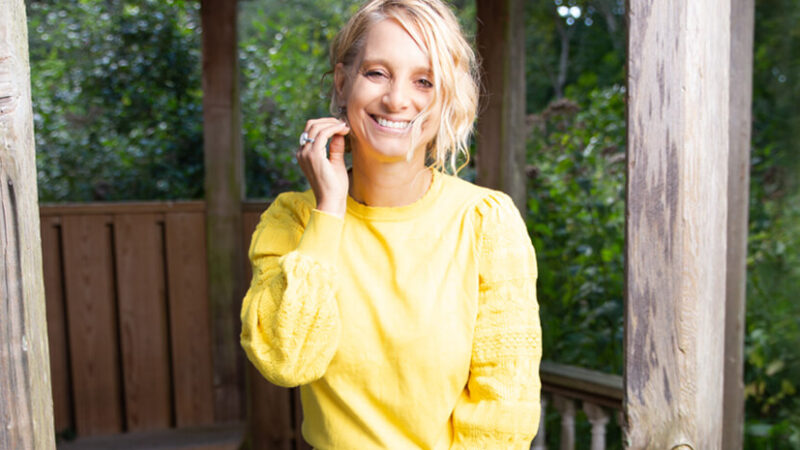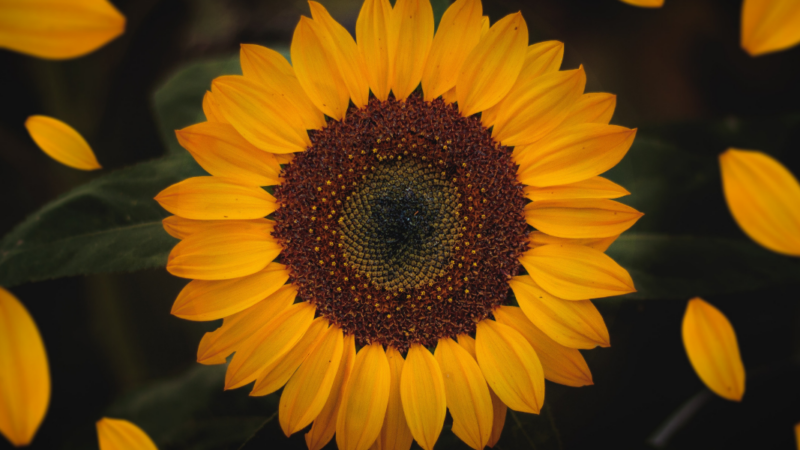-
E117: The Real Work: Letting Go from Within
Michael Singer — October 2, 2025
True spirituality isn’t about mystical experiences or lofty ideals—it’s about honestly facing...
-
Once More: Reflections on Reincarnation and the Gap Between Lives
Tami Simon — September 26, 2025
In this special reflection episode of Insights at the Edge host Tami Simon looks back on her...
-
Honey Tasting Meditation: Build Your Relationship with Sweetness
There is a saying that goes “hurt people hurt people.” I believe this to be true. We have been...
Written by:
Amy Burtaine, Michelle Cassandra Johnson
-
Many Voices, One Journey
The Sounds True Blog
Insights, reflections, and practices from Sounds True teachers, authors, staff, and more. Have a look—to find some inspiration and wisdom for uplifting your day.
Standing Together, and Stepping Up
Written By:
Tami Simon -
The Michael Singer Podcast
Your Highest Intention: Self-Realization
Michael Singer discusses intention—"perhaps the deepest thing we can talk about"—and the path to self-realization.
This Week:
E116: Doing the Best You Can: The Path to Liberation -
Many Voices, One Journey
The Sounds True Blog
Insights, reflections, and practices from Sounds True teachers, authors, staff, and more. Have a look—to find some inspiration and wisdom for uplifting your day.
Take Your Inner Child on Playdates
Written By:
Megan Sherer
600 Podcasts and Counting...
Subscribe to Insights at the Edge to hear all of Tami's interviews (transcripts available, too!), featuring Eckhart Tolle, Caroline Myss, Tara Brach, Jack Kornfield, Adyashanti, and many more.
Most Recent
Tibetan Buddhist Practice for Developing Compassion
Realizing Emptiness and Connection
Take a few minutes to sit peacefully with your eyes closed or looking down. Observe your breath as you breathe in and out.
-
- Allow yourself to breathe naturally, without any modification of the breath.
-
- For a few minutes, simply observe your breath in its most natural state, as it passes through your nostrils.
-
- If you find that you are distracted by your thoughts or sounds, no problem; just go back to observing your breath.
In your mind, see a table.
In English, it is described by the word “table.”
This table is made up of many pieces: a top, legs, glue, nails, and varnish.
The legs and top are made up of wood from a tree. Before the tree was cut down it grew as a result of many variables—sunlight, seeds, rain, earth, and wind, to name just a few.
And before it was a tree, it was a seed from another tree, and another tree before that.
What about the nails or the varnish? Those items can also be traced backward to the people, companies, and components that went into their production.
And the people who created the components also came into being from their parents, and their parents before them.
We now see that everything around us—all phenomena—were caused by something that preceded it and can be traced back to a beginningless time.
Next time, pick another thing, place, or person and go through the same logic. As you go about your day, notice everything around you and apply the same logic.
When you walk around your work or home environment, notice that everything is empty of inherent existence. Everything has a name that refers to a thing that comes together for a time.
Zen teacher Norman Fischer said:
- In the end everything is just designation: things have a kind of reality in their being named and conceptualized, but otherwise they actually aren’t there in the way we think they are. That is, connection is all you find, with no things that are connected.[. . .] It’s the very thoroughness of the connection—without gaps or lumps in it—only the constant nexus wherever you turn—that renders everything void. So everything is empty and connected or empty because connected. Emptiness is connection.
This is an excerpt from The Tibetan Book of the Dead for Beginners: A Guide to Living and Dying by Lama Lhanang Rinpoche and Mordy Levine.
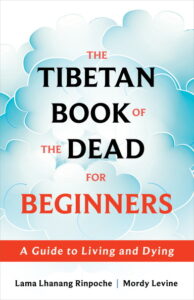
Sherianna Boyle: Energy in Action
“Focus on your thoughts.” That’s the first instruction most of us receive when we begin to explore the practice of manifestation. Sherianna Boyle has a different suggestion: focus on your emotions. In this podcast, Tami Simon speaks with Sherianna about her new book, Energy in Action: The Power of Emotions and Intuition to Cultivate Peace and Freedom. They discuss Sherianna’s CLEANSE approach to emotional detoxing, how we can align with universal truths and our own intuition to improve our health and happiness, and how our manifestation practice can become an offering of service to all beings.
Listen in for these topics and more: clearing reactivity and toning the vagus nerve; looking inward to identify how your thoughts make you feel; the hum mantra; resting in the “I am” space; when to “allow and receive” and when to “notice and observe”; abundance, flexibility, and security; a spectrum of colors associated with spiritual laws; the teaching, “as vibration goes up, thinking goes down”; how we’re always creating something; plus, a guided meditation for our collective healing.
Note: This episode originally aired on Sounds True One, where these special episodes of Insights at the Edge are available to watch live on video and with exclusive access to Q&As with our guests. Learn more at join.soundstrue.com.
What Your Feelings Are Trying to Tell You
Lorem ipsum dolor sit amet, consectetur adipiscing elit. Ut elit tellus, luctus nec ullamcorper mattis, pulvinar dapibus leo.

Karla McLaren, M.Ed., is an award-winning author, social science researcher, and empathy innovator. She is CEO of Emotion Dynamics Inc., developer of Dynamic Emotional Integration®, and creator of EmpathyAcademy.org. Karla is the author of Embracing Anxiety, The Dynamic Emotional Integration Workbook, The Art of Empathy, The Power of Emotions at Work, and the multimedia online course Emotional Flow: Becoming Fluent in the Language of Emotions. For more, visit karlamclaren.com.
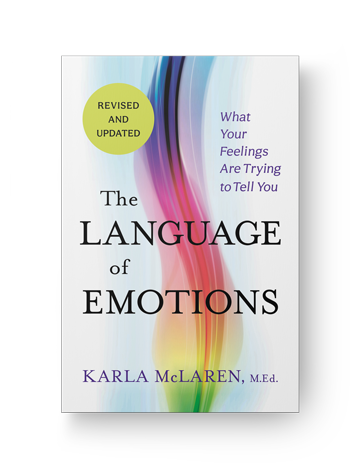
Learn More
Amazon | Barnes & Noble | Bookshop | Sounds True
Customer Favorites
Is There a Holy Grail of Healing?
Lissa Rankin, MD, is a New York Times bestselling author of multiple books including Mind Over Medicine, a physician, speaker, founder of the Whole Health Medicine Institute and the nonprofit Heal At Last, and mystic. Lissa has starred in two national public television specials, her TEDx Talks have been viewed over 4 million times, and she leads workshops both online and at retreat centers like Esalen, 1440 Multiversity, Omega, and Kripalu.
In this podcast, Dr. Rankin speaks with Sounds True founder, Tami Simon, about her new book, Sacred Medicine: A Doctor’s Quest to Unravel the Mysteries of Healing. Their conversation explores: the placebo effect and the mega-placebo effect; the scientific method and some assumptions we should question; the relationship between trauma, the nervous system, and healing; connectivity and co-regulation; developmental trauma, or what Mark Epstein calls “the trauma of everyday life”; the concept of spiritual bypassing; chronic inflammation as a root cause of many diseases; the paradoxes of healing; our four “intelligences”—mental, somatic, intuitive, and emotional—and what to do when they “disagree”; Internal Family Systems (IFS) therapy and working with the polarized parts within ourselves; healing the collective; and more.
Release emotional baggage and reclaim your joy
If you or someone you know suffers from any form of depression—from feeling exhausted or blue to not being able to get out of bed—I am excited to share something with you that can offer a new approach to this huge challenge facing so many people today. Depression happens on a “spectrum” and can have a huge impact on our daily lives. I see depression as the literal depression of self—a side effect of being buried under the sometimes-overwhelming thing called “life.”
In my latest book, How To Heal Yourself From Depression When No One Else Can, I’m bringing my tried-and-true methods to one of the greatest challenges of our time.
My work has helped thousands of people overcome emotional and physical challenges when nothing else has worked. Today I want to share with you one technique that we use in several different ways together in the new book: The Sweep Technique.
The Sweep Technique is a script that you repeat in order to clear subconscious blocks and beliefs. It can be done by simply reading the script out loud or in your head a few times in a row.
The Sweep Script
Even though I have this _______ (describe what you want to release such as “feeling depressed and fatigued”), I acknowledge it’s no longer working for me.
I give my subconscious full permission to help me clear it, from all of my cells in all of my body, permanently and completely.
I am now free to thank it for serving me in the past.
I am now free to release all resistances to letting it go.
I am now free to release all ideas that I need this in order to stay safe.
I am now free to release all ideas that I need it for any reason.
I am now free to release all feelings that I don’t deserve to release it.
I am now free to release all conscious and subconscious causes for this energy.
I am now free to release all conscious and subconscious reasons for holding on to it.
I am now free to release all harmful patterns, emotions, and memories connected to it.
I am now free to release all generational or past-life energies keeping it stuck.
All of my being is healing and clearing this energy now, including any stress response stored in my cells.
Healing, healing, healing. Clearing, clearing, clearing.
It is now time to install _______ (insert a new, healthy energy such as “the energy of moving forward,” “the feeling of being content,” or “the belief that I can feel better now”).
Installing, installing, installing. Installing, installing, installing. And so it is done.
If you’d like to join me for more healing in the new book, I will walk you through using more of this technique, along with others—to release emotional baggage, reconnect with yourself, and reclaim your joy.
Love,
Amy B. Scher
This originally appeared as an author letter by Amy B. Scher, author of How to Heal Yourself From Depression When No One Else Can: A Self-Guided Program to Stop Feeling Like Sh*t.
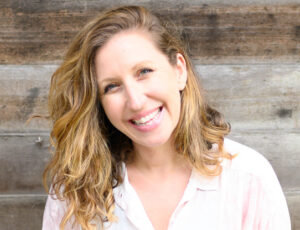
Amy B. Scher is an energy therapist, expert in mind-body healing, and the bestselling author of How to Heal Yourself When No One Else Can and How to Heal Yourself from Anxiety When No One Else Can. She has been featured in the Times of India, CNN, HuffPost, CBS, the Washington Post, Cosmopolitan, the Los Angeles Review of Books, Curve magazine, and San Francisco Book Review. Scher was also named one of the Advocate’s “40 Under 40.” She lives in New York City. For more, visit amybscher.com.

Learn More
Sounds True | Amazon | Barnes & Noble | Indiebound | Bookshop
4 Ways to Practice Gratitude This Holiday Season
The holiday season can be hectic and overwhelming, with many mixed emotions, from excitement to stress. It’s the perfect time to commit to a daily practice of gratitude which will help you experience more moments of contentment and joy and give you resilience to handle the many challenges (including travel and stressful relatives). And when you share your gratitude with others, you help them feel seen, valued, elevated, and help yourself feel more closely connected to people in your life. Here are four ways to practice gratitude this holiday season.
Say Thank You and Mean It
When you thank someone, be intentional about it and put your heart and appreciation into your words. Take a moment, pause, look them in the eye, smile, and say ‘Thank you’. If there is something specific you want to thank them for, do it, go the extra step, that’s awesome.
Daily Gratitude Bookends
Begin and end your day by writing down a few things you’re grateful for. Literally bookend your day with gratitude. If you’re not a journaling type, that’s fine—how about sharing what you’re grateful for with someone else, like a family member, friend, or co-worker—in-person or via text or email. You won’t just be practicing gratitude for yourself but inspiring them to do it also. Remember to be as specific as possible and don’t neglect really small moments.
Gratitude Zoom
If you’re feeling down or caught in a negativity spiral, pause and challenge yourself to find something you can appreciate within your experience, however small. For example, if you’re sad about being sick and missing out on what you would rather be doing, can you feel grateful that you have medicine or a comfortable place to recover or people around to help care for you?
Gratitude Antidote
When something stresses you out—too much traffic, an annoying colleague, etc.—use it as a reminder to practice gratitude. You don’t have to be grateful for whatever is stressing you out, but use it as a nudge to pause, take a breath, and think of something, however small, that you are grateful for in that moment. When you do this, you prevent your brain from going into a negativity spiral, where one annoying thought brings on another, and another, and another, until you have a really rough day.
 Nataly Kogan is an author (Happier Now), speaker, and the founder of Happier. Her work has been featured in hundreds of media outlets, including the New York Times, the Wall Street Journal, TEDx Boston, SXSW, and Dr Oz. Nataly lives with her husband and daughter in Boston. For more, visit happier.com.
Nataly Kogan is an author (Happier Now), speaker, and the founder of Happier. Her work has been featured in hundreds of media outlets, including the New York Times, the Wall Street Journal, TEDx Boston, SXSW, and Dr Oz. Nataly lives with her husband and daughter in Boston. For more, visit happier.com.


